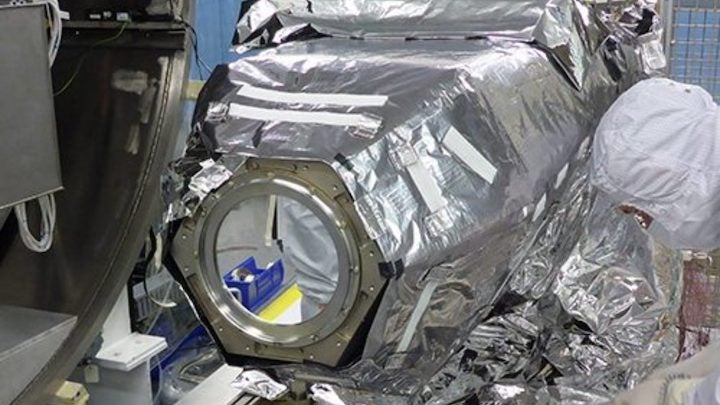Latest News

Lockheed will improve upon the Geostationary Lightning Mapper (GLM) technology, shown above, for the GeoXO Lightning Mapper. Photo: Lockheed Martin
NASA awarded Lockheed Martin a contract to design and build the next-generation GeoXO Lightning Mapper (LMX) instruments for the National Oceanic and Atmospheric Administration (NOAA) GeoXO satellites. The baseline contract announced Sept. 18 is valued at approximately $297 million for two instruments with options for two additional instruments.
LMX is a single-channel, near-infrared optical instrument that will be onboard the GeoXO satellites to detect and measure lightning flashes in near-real-time. This lightning data will improve storm analysis and prediction and help detect tornado-producing storms.
Lockheed Martin is building the GeoXO three-satellite weather constellation under a contract awarded in June. BAE Systems has been awarded contracts to build all three hyperspectral instruments for the mission: the Ocean Color Instrument (OCX), the GeoXO Sounder (GXS), and the Atmospheric Composition Instrument (ACX).
Lockheed Martin previously built the Geostationary Lightning Mapper (GLM) for NOAA for the GOES-R series of weather satellites. These instruments are the first lightning mappers flown in GEO. Lockheed said it will build on the GLM technology for the LMX instruments with finer spatial resolution and faster imaging of lightning activity.
“This advanced technology will give meteorologists a tool to create greater lead time in alerting people to severe storms and dangerous weather situations such as rapidly intensifying hurricanes,” commented Matthew Mahlman, director of Weather, Earth Science and Climate Intelligence at Lockheed Martin.
Stay connected and get ahead with the leading source of industry intel!
Subscribe Now